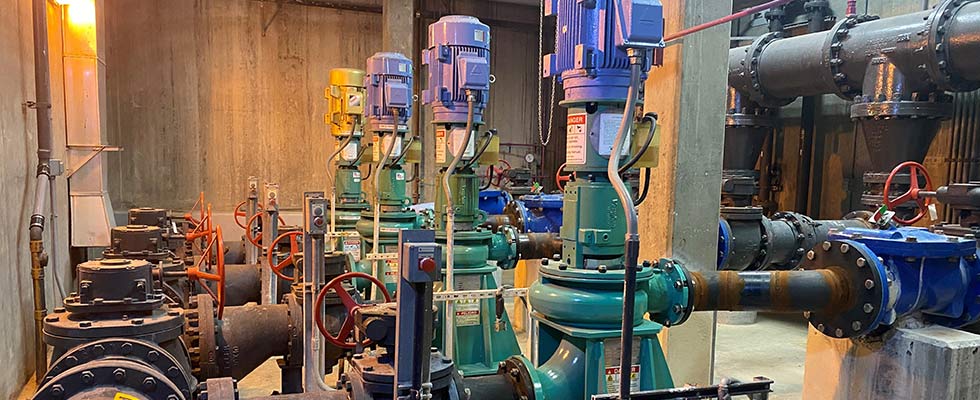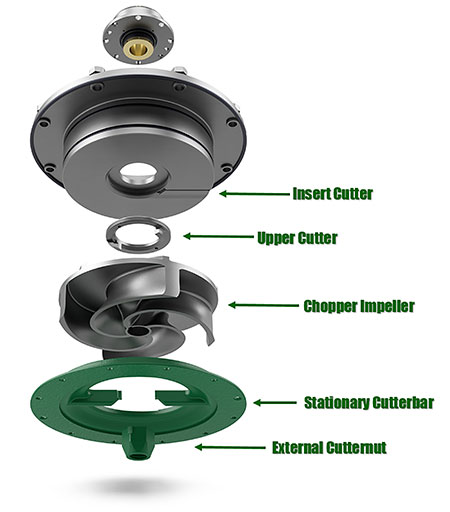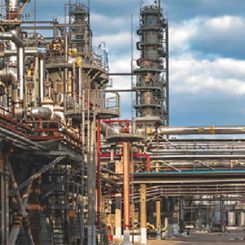
Pumps are arguably the most important and prevalent pieces of equipment for any facility. The ability to transport fluids reliably and efficiently is critical to the modern world. However, users hardly ever have the luxury of transporting a pure liquid like clean water—instead, they are left to deal with whatever is left. Pumping reliability is not based solely on mechanical performance but also on the solids handling performance. Clogging and binding represent system downtime, while plugging upstream piping and fittings can be more troublesome. Based on this reality, the need for solids handling pumps becomes clear.
Nonclog centrifugal and positive displacement pumps are extensively used in solids handling applications. A maximum solids size, or ball pass, is commonly specified, denoting the maximum sphere diameter which can reliably pass through the pump. This technique may work for some applications with larger pumps and a smaller expected solids size but many times, this is not the case. Wastewater pumping commonly experiences unpredictable and/or large solids sizes which may require an active solids handling pumping technology that does not just passively allow solids to pass through the pump, but actively reduces and conditions them.

While various schemes of solids handling have been proposed, there are three main types of active solids handling pumps: chopper pumps, cutter pumps and grinder pumps. Unfortunately, due to a lack of a universally accepted formal definition and hybridization, it can be difficult to understand which category a pump falls into.
Here are some proposed definitions that provide a meaningful distinction between chopper, grinder and cutter pumps.
The hydraulic surfaces in a chopper pump are integral to the solids handling, directly chopping the solids using the impeller. While other pump designs may similarly make use of stationary and rotating elements to address solids, it is more accurate to understand these as cutter pumps.
The core concept is, with a chopper pump, it is impossible to separate the chopping from the pumping. Conversely, a cutter pump may have the cutting feature separated from the pumping. This has the benefit of allowing cutter pumps to use various impeller types, but the added components can add complexity and increase power requirements.
A more specialized version of a cutter pump is a grinder pump. A grinder pump is defined by integrating a grinding mechanism instead of, or in addition to, any cutting implements. This contributes to the increases in power consumption and reduced pump capacity, but it does provide the most controlled discharge solids size. This makes them suited for applications like septic systems, where smaller piping and dependability prove more important than efficiency, but in practice, users will rarely see grinder pumps in higher capacity pumping applications.
In industry, the terms chopper pump and cutter pump are used interchangeably by manufacturers, while the term grinder pump is used rather consistently. In addition to the lack of a formal definition mentioned above, the main reason for this is that most contemporary chopper and cutter pumps are hybrid variants of the
two styles.
The chopper pump shown in Image 1 is one such example. It uses the impeller to cut against a stationary cutter bar to provide the chopping action, but there are also several cutters integrated into the pump. There is an external cutter that cuts fibers and keeps items from bridging the suction, an upper cutter behind the impeller that prevents fibers from wrapping on the mechanical seal and shaft and an insert cutter in the backplate to keep the pump out vanes on the back of the impeller from binding. So, while it might be marketed as a chopper pump, it does have cutters, which without the chopping impeller, would make it a cutter pump.
Alternatively, another manufacturer’s pump might not feature a chopping impeller or it might be a secondary feature to a primary cutter system, so it could be marketed as a cutter pump. Regardless of labeling, the decision on which type of pump to use should be based upon the needs of the application, and those needs have been getting more severe.
New sewage is a term that has become a bit of a buzzword in the wastewater industry. Increases in water-use efficiency have concentrated wastewater strength, while changes in consumer preference from toilet paper to woven fiber wipes have caused many collections systems a serious maintenance headache from pump wrapping and plugging. On top of this, when grease is added to the equation, it leads to reports of fatbergs popping up in sewers from London to Detroit.
This evolution in sewage has prompted calls for changes in wipes labeling and efforts to educate the public about flushable products. Additionally, it has prompted health departments to crack down on illicit grease disposal into the sewer, but the biggest change has been to the people on the front lines fighting daily to keep sanitary sewers flowing.
Nonclog can feel like a misnomer in certain applications. Lift stations in key locations are requiring servicing almost daily, and vacuum trucks are running full-time, putting stress on tight budgets and requiring expensive callouts. If this sounds familiar, it may be time to evaluate user solids handling technology. Restaurant districts, hotels, senior housing and corrections facilities are examples of traditional severe duty locations. Strategic replacement in key locations with a chopper/cutter pump can provide attractive payback periods, sometimes measured in months rather than years.
Inside the treatment facility, with higher solids concentrations and more frequent screen bypassing caused
by infiltration and inflow from aging sewers, active solids handling pumps should be a regular consideration. Industrial and manufacturing facilities should also evaluate their solids handling applications. Wrapping and clogging of pumps leads to lost production in addition to maintenance expenses. Users should consider looking at more robust solids handling pump technology when they are experiencing regular pumping issues.
Depending on the specific application, there are different features users will want to look for in a pump selection. Stringy, fibrous solids require cutters with easily maintained clearances to prevent binding and wrapping issues, while larger bulky solids are going to need larger openings and chopping features. There may be some cases where one of these types of solids is not present, but generally, users are going to have a combination of both and require a pump that can provide this dual function. Work with the pump supplier to ensure it understands user needs and supplies a solution for the specific application. Ask for reference installations and understand what is being pumped.
The new sewage is changing the wastewater landscape, and it is happening concurrently with the beginning of a strong period of infrastructure investment and renewal. Now is the time to make key upgrades in the resiliency of wastewater systems to meet the challenges of tomorrow.

